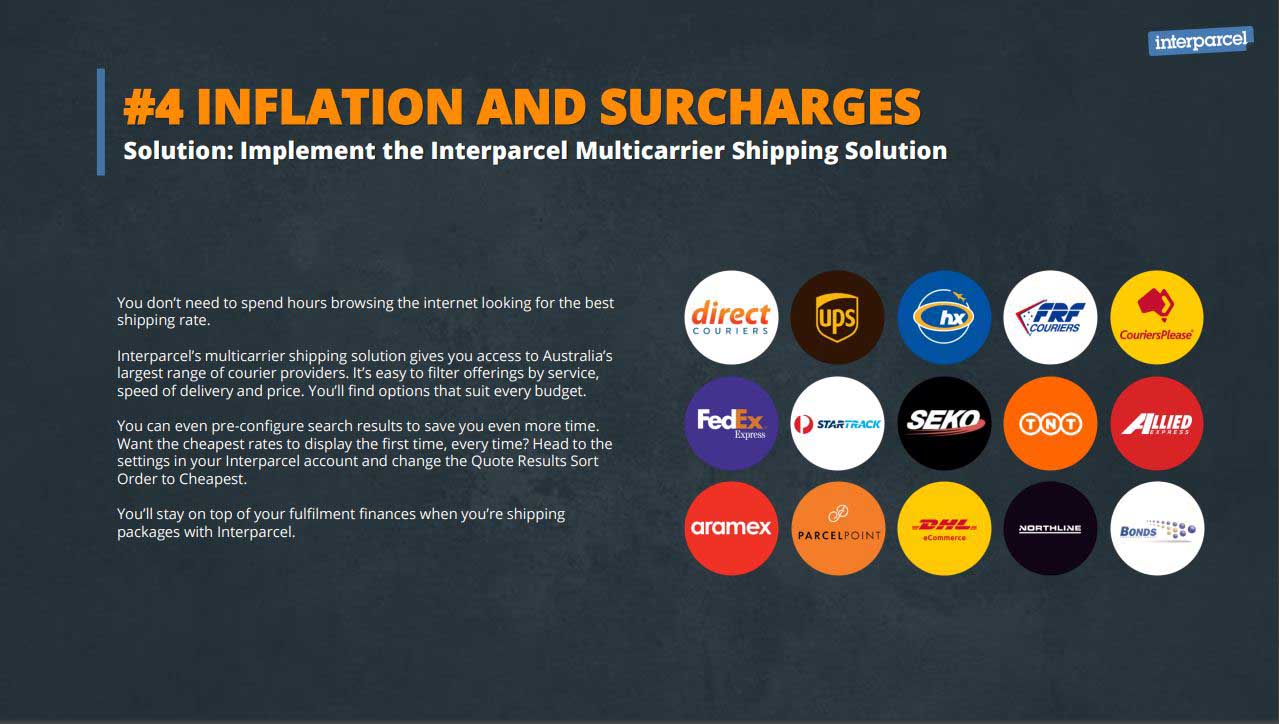Would it surprise you to learn that ecommerce spending in 2022 reached an all-time high?
The Cyber Weekend Benchmark report discovered that businesses saw an 8% increase in website traffic year on year. The conversion rate and average order value also significantly improved year on year during the cyber sales.
But don’t bust out the party poppers yet. There are still a lot of obstacles on their way in 2023.
The 2023 Inside Australian Online Shopping report forecasts that the ecommerce industry will return to its historical growth trend of 3% per annum per year. This is based on the number of online purchases being down 2.6% year on year after previously experiencing double digit growth in 2021. By 2033, they predict one in every three dollars will be spent online.
Throw in other pressures such as labour shortages, inflation and an increase in natural disasters, and it can look like a tough road ahead for ecommerce businesses and logistics managers. That’s why we’ve put together the 6 Crucial Shipping Challenges Every Ecommerce Owner Must Conquer in 2023. Here’s how it can help.
How to Overcome the Challenges Ahead
Besides slower ecommerce growth and fewer customers entering the market, there are other challenges on the horizon in 2023. Some of the most prominent are:
Ongoing Labour Shortages
Have you noticed it’s getting harder to fill vacancies? Despite increasing the permanent skilled migration cap and speeding up visa processing times, finding workers is harder than ever. It’s having detrimental impacts on supply chains and the logistics industry.
These shortages make it harder for ecommerce owners and logistics managers to grow their businesses. It leads to delays in fulfilling orders and responding to client enquiries. The result is unhappy customers and lost sales.
Increase in Natural Disasters
Last year Australia experienced devastating fires, unforgiving flooding events and many other extraordinary natural disasters. The impact on the economy was approximately $5 billion. But this figure is expected to rise as repair and recovery efforts continue.
The increase in natural disaster occurrences causes significant disruptions to fulfilment providers. Even if a recipient isn’t located in an impacted area, it can affect routes and supply chains.
Everchanging Customer Expectations
Fast and reliable shipping is no longer an option. It’s an expectation for customers. While completing their purchase, they want to see choices for delivery, such as standard or same-day. Customers also want assurance as to when their parcel will arrive.
Without these choices, your shoppers may choose to take their business elsewhere. But at the same time, implementing all these options and managing shipping and handling times can be time-consuming. You need to find a way to utilise technology and automation to give shoppers the best shopping experience.
Inflation and Surcharges
The most popular topic in the news these days are the challenges of inflation. Australia is currently experiencing record levels due to the aftermath of the pandemic and increases in consumer demand. While it’s declining, inflation is not expected to reach the desired levels until 2024.
To manage these rising costs, courier companies have introduced surcharges and additional fees. It has forced logistics managers and ecommerce owners to explore more cost-effective solutions.
Rising Costs to Scale Globally
In addition to the rising costs in Australia, shipping a parcel overseas has also got more expensive. The problem is even worse for small businesses that sell small and lightweight products. Between the collection costs and the fuel surcharges, it can be unfeasible to consider scaling globally.
However, growing your business internationally can help you tap into new markets and customer segments. You can also diversify your revenue streams. But to achieve this goal, you need a solution that manages your operational costs and improves profitability.
Increased Demand for Sustainable Deliveries
A KPMG report found that 80% of customers will buy from businesses that value the environment, society and governance. In other words, customers are rewarding businesses that adopt sustainable practices.
If your business or logistics department is facing these obstacles in 2023, the 6 Crucial Shipping Challenges Every Ecommerce Owner Must Conquer in 2023 can help. It includes tips on strategies that you can implement today so that you’re prepared for anything this year throws at you.
How to Optimise Your Fulfilment Strategy
Parcel delivery companies are also facing challenges in 2023. From rising fuel costs to labour shortages, it has forced many courier providers to lift rates or add surcharges so they can continue to operate.
These changes have forced ecommerce businesses and logistics managers to revisit their fulfilment strategy. Fortunately, we’ve done all the hard work. 6 Crucial Shipping Challenges Every Ecommerce Owner Must Conquer in 2023 includes expert advice on how you can take control of your shipping costs and continue to deliver an exceptional customer experience.

How a Multicarrier Shipping Solution Can Help Your Business in 2023
6 Crucial Shipping Challenges Every Ecommerce Owner Must Conquer in 2023 doesn’t include a shopping list of software and applications you need to purchase for the year ahead. But it shows how a multicarrier shipping solution can improve your ecommerce business or logistics department.
It not only helps you overcome the challenges coming in 2023. There are also examples that show how to get hours back in the day so you can focus on high-value business objectives. If your organisation is following Meta’s footsteps and calling 2023 “The Year of Efficiency”, then implementing a multicarrier shipping solution should be at the top of your list.

Where Can You Download the Guide
Diving head-first into 2023 without a plan isn’t recommended. With cost-of-living pressures and a decline in new customers entering the market, your ecommerce business or logistics department is going to need a strategy if you want to thrive over the next 12 months.
The 6 Crucial Shipping Challenges Every Ecommerce Owner Must Conquer in 2023 is available to download now. The best part is that it’s free! Head to this link to get your copy and start implementing these strategies today!










 Facebook
Facebook Twitter
Twitter Instagram
Instagram Linked In
Linked In YouTube
YouTube